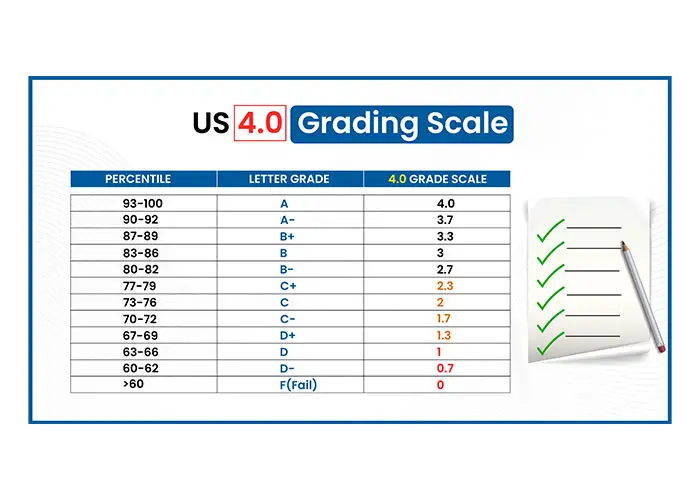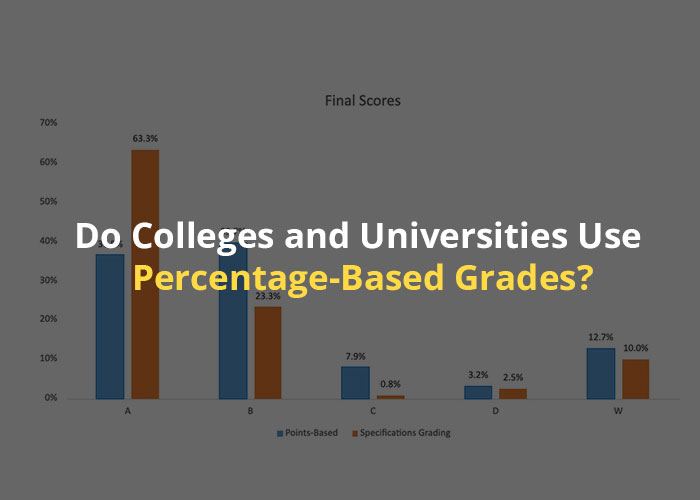Introduction: Understanding Grading Systems in Higher Education
When it comes to grading, universities and colleges around the world have diverse evaluation systems. Some rely on percentage-based grades, while others prefer letter grades or GPA-based assessments. But how common is percentage grading in higher education, and where is it still widely used?
In this guide, I, Dinesh Bajaj, will take you on an insightful journey through percentage-based grading in colleges and universities. We’ll explore how it works, its pros and cons, and how it stacks up against other grading systems globally. Plus, we’ll discuss its impact on admissions, student performance, and international applications.

What is a Percentage-Based Grading System?
A percentage-based grading system assigns a numerical score (0-100%) to students based on their performance in exams, assignments, and participation. It provides a transparent evaluation, allowing students and educators to gauge academic progress clearly.
Example of Percentage Grading Categories:
- 90-100% – Excellent (A Grade/Distinction)
- 75-89% – Very Good (B Grade/First Division)
- 60-74% – Good (C Grade/Second Division)
- 50-59% – Average (D Grade/Third Division)
- Below 50% – Fail
Where is Percentage-Based Grading Used?
Many colleges and universities worldwide continue to use percentage-based grades. Let’s explore some key regions:
- India – Most universities still follow a percentage-based evaluation system.
- China – Many institutions prefer numerical grading.
- United Arab Emirates – A mix of percentage grades and letter grades is common.
- Parts of Europe – Percentage grading is often integrated with letter grades or GPA systems.
Although GPA-based systems are becoming increasingly popular, percentage grading remains a dominant evaluation method in several countries.
Advantages of Percentage-Based Grading
Why Some Universities Still Favor Percentage Grades
- Precise Assessment: Percentage grades give an exact measure of a student’s performance.
- Easy to Understand: Students, parents, and employers find numerical grades straightforward.
- Globally Recognized: Many competitive exams, including those in India, align with percentage-based scoring.
- Encourages Consistency: Students are motivated to maintain good scores across all subjects.
- Clear Benchmarking: It’s easier to compare academic performance between students.
Disadvantages of Percentage-Based Grading
Challenges Faced by Students and Institutions
- Lack of Standardization: Grading cutoffs vary between colleges, leading to inconsistencies.
- Stress on Absolute Scores: The focus on numerical precision can cause unnecessary pressure on students.
- Difficulty in GPA Conversion: Many international universities require percentage-to-GPA conversions, which may not always reflect true academic potential.
- Risk of Grade Inflation: Some institutions may award high percentages more liberally, affecting fairness.
- Limited Relative Performance Evaluation: Unlike GPA, percentage grades don’t always reflect a student’s ranking compared to peers.
Global Trends: Do Colleges and Universities Use Percentage Grades?

Grading systems differ worldwide. While percentage grading is common in India and China, countries like the United States and Canada lean toward GPA-based systems.
Comparison of Grading Systems by Region
| Region | Primary Grading System | Use of Percentage Grades |
|---|---|---|
| United States | GPA (0-4.0), Letter Grades (A-F) | Rarely used, converted to GPA |
| United Kingdom | Class-Based (First, Upper, Lower) | Limited usage in raw form |
| India | Percentage-Based System | Widely used |
| Canada | GPA & Letter Grades | Some institutions use percentages |
| Australia | Percentage + GPA | Common in higher education |
Percentage vs. GPA: How to Convert Scores
Students applying to international universities often need to convert their percentage grades into GPA. Below is a general conversion table:
| Percentage | Equivalent GPA (Out of 4.0) |
|---|---|
| 90-100% | 4.0 |
| 80-89% | 3.7 |
| 70-79% | 3.0 |
| 60-69% | 2.7 |
| 50-59% | 2.0 |
| Below 50% | 1.0 (or Fail) |
Percentage-Based Grading and Letter Grades
Some universities use a letter grading system that correlates with percentages.
| Percentage | Letter Grade |
|---|---|
| 90-100% | A+ |
| 80-89% | A |
| 70-79% | B |
| 60-69% | C |
| 50-59% | D |
| Below 50% | F (Fail) |
Should You Focus on Percentage or GPA for College Admissions?
Domestic Institutions
In countries like India, China, and UAE, percentage-based grading remains the norm. Students applying to domestic colleges should focus on achieving a high overall percentage to improve their chances of admission.
International Universities
For students aiming to study abroad, it’s essential to:
- Convert your percentage scores into GPA (as per the university’s requirements).
- Explain your country’s grading scale in your transcripts.
- Highlight academic achievements with a grading scale conversion if needed.
Conclusion: What Grading System Matters Most?
So, do colleges and universities use percentage-based grades? It depends! In regions like India, China, and some parts of Europe, percentage grades remain dominant. Meanwhile, GPA and letter grades are the standard in the United States, UK, and Canada.
Whether you’re applying domestically or internationally, understanding your grading system and how it compares globally can give you a competitive edge. Ultimately, maintaining high academic performance, regardless of the grading system, is the key to unlocking opportunities in higher education and beyond.




